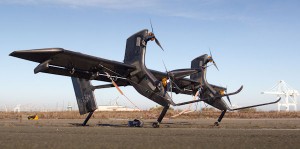by James A. Bacon
I have inveighed repeatedly against the folly of pumping billions of public dollars into solar- and wind-powered projects, whether by means of direct subsidies, loan guarantees or the electric-utility mandates known as Renewable Portfolio Standards. Building and maintaining a vast, expensive energy infrastructure based on uneconomic technology saddles government and consumers with unnecessarily high costs for a generation to come — and locks out emerging technologies that are far more efficient.
The problems with conventional wind power are now well known. Windmills are expensive to build. The power is intermittent. The turbine blades kill birds and bats.
Recently, however, a new generation of wind technology is coming to market. It sounds like an idea invented by someone who ate too many funny mushrooms: wind turbines on kites. It is, as yet, unproven but its backers claim that it addresses the major drawbacks of the giant windmills. The Wall Street Journal describes the concept: “Engineers are working on using kites to send aloft power generators that create energy when mounted rotors are spun by the wind; they transmit electricity through the cables that tie them to the earth as a string tethers a child’s kite.”
One model built by Google-backed Makani Power in Almeda, Calif., is capable of generating 30 kilowatts of electricity, enough for 20 average U.S. homes. The kites are cheaper than windmills because they don’t require construction of a large supporting structure. The electric power they generate is more consistent because wind is more constant at higher attitudes. One version designed by Kitefarm, of Kilauea, Hawaii, even has a controller that helps the kite avoid birds.
The idea is taking off, with a half dozen companies in the U.S. and Europe pushing prototypes. While no electric utility has publicly committed to use a kite generator, the WSJ says power companies are keeping a close watch on the developing technology.
Makani says it believes it can generate wind power for $30 per megawatt hour, compared with $58 for new land-based turbines, partly because of the lower capital costs. “We’re offsetting a large amount of steel and concrete with computational sophistication,” said Corwin Hardham, chief executive of Makani Power. He says Makani Power will use one-tenth of the materials needed for a traditional wind turbine and deliver more consistent power.
What makes flying wind turbines a viable idea all of a sudden? Falling costs of carbon-fiber, the structural material used in the kite, as well as improvements in unmanned flight technology and navigational software. Ka-boom, baby! Another revolution the policy gurus and economic dirigistes in Washington failed to foresee.
Bacon’s bottom line: Who knows if the promises of these start-up companies will pan out? Perhaps practical problems will surface that no one has anticipated yet. Perhaps someone will leapfrog them with an even better idea. Perhaps lobbyists for Big Wind (like GE with its massive commitment to windmills) will regulate them out of existence. Or maybe they will deliver on their promises.
What we can say is this: Insofar as Virginia’s power companies have dragged their feet in committing to conventional renewable technologies, they may have done us all a big favor. Instead of rows and rows of windmills standing off the shore of Virginia Beach, we may one day see clouds of electricity-generating kites on the horizon — put there at half the cost.
The proper role of government is to underwrite energy-related research for which the payoff is too distant or speculative for the private sector to engage in — not to pick the technologies that should enter the marketplace. That strategy has led to Solyndra and an endless parade of other government-backed failures engineered by rent seekers. Let us cross our fingers and hope that these flying turbines will provide the renewable energy breakthrough we all yearn for. If it doesn’t, rest assured that as we make advances in material science, microchips and software, an even better idea will leap out of the clear blue sky.



